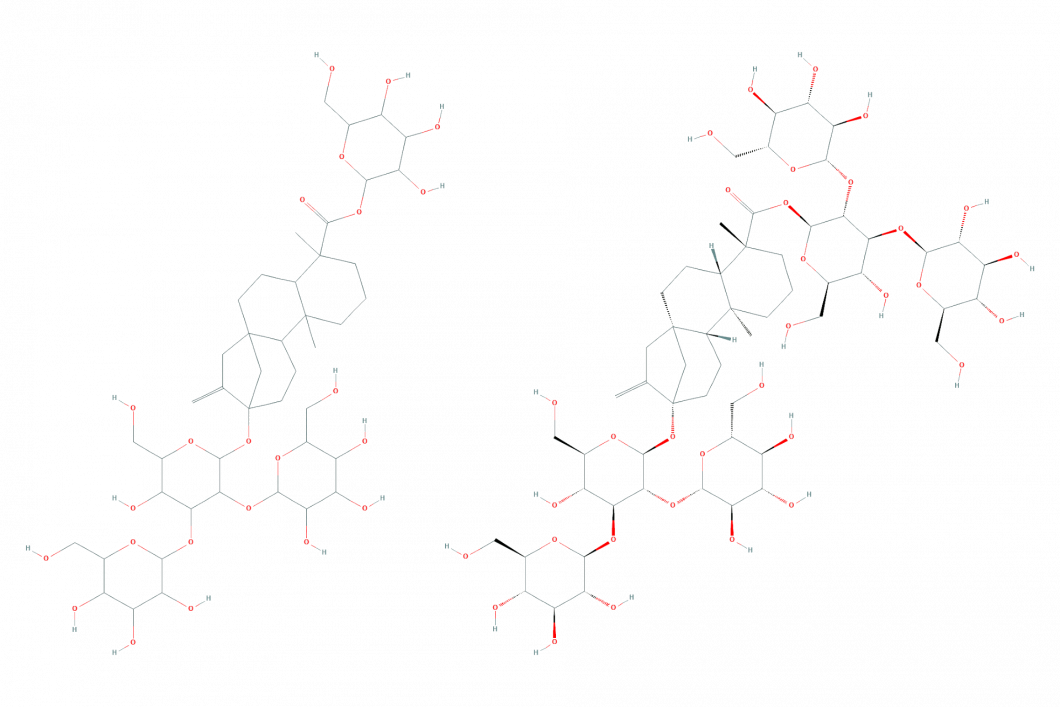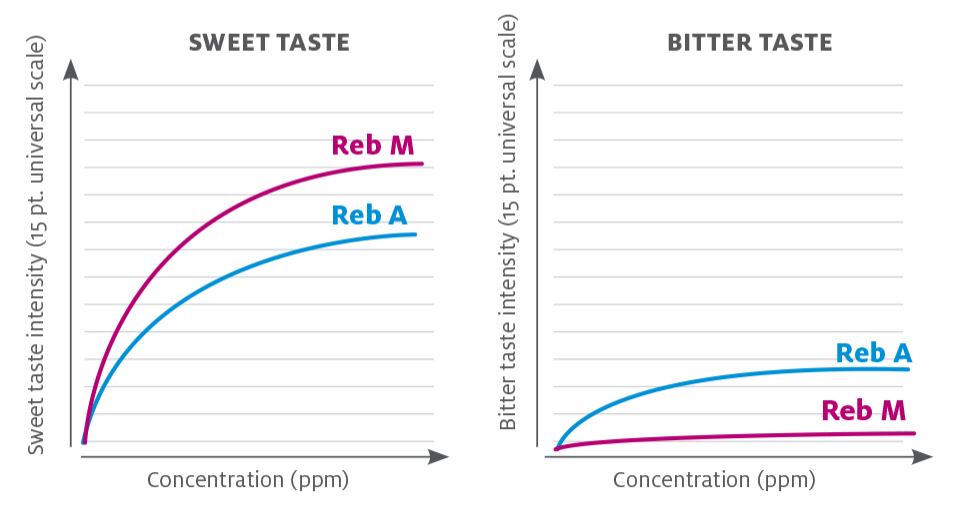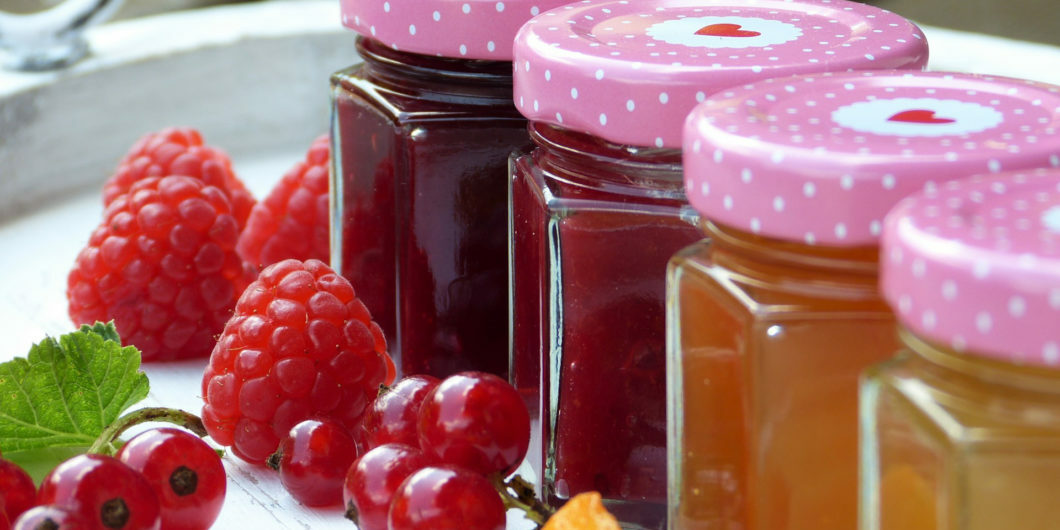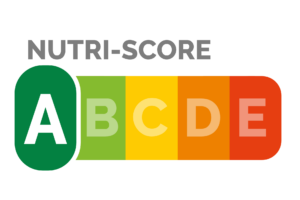Product development • Have you yet not tried reb M? Then it's time. Expect a whole new experience. The taste is pure and clear and is similar to sugar. The advantage is that it can take place without the help of ingredients that mask off-flavour and aftertaste. But it's an exclusive little steviol glycoside we're talking about. It is only found in low concentrations in stevia's leaves. Curious? Continue to read!
In just a decade, steviol glycosides, the sweet substances of the plant stevia (Stevia rebaudiana), have made great strides in the world. Globally, the number of foods and beverages sweetened with steviol glycosides is estimated to soon exceed 16,000 products.
Cravings for steviol glycosides
Steviol glycosides continue to grow in popularity. The sweetener with the natural origin mainly takes market shares from other high-intensity sweeteners such as aspartame, acesulfame K and sucralose.
The reason for the growing use of steviol glycosides is that consumers are becoming more health-conscious. Consumers want to feel the sweet taste in food and drink, but they also want fewer calories and ingredients of natural origin.
This is where the exclusive steviol glycoside reb M comes into the picture. This is a sweetener that does not compromise with the taste.
The search for the perfect steviol glycoside
Among the first steviol glycosides approved by the EU in 2011, stevioside was the pioneer of stevia-based sweeteners. Stevioside was first because it is the most common steviol glycoside in stevia leaves. The problem with stevioside is that it has a bitter aftertaste and a licorice-like aftertaste.
But then the researchers discovered stevia plants that stood out from the crowd. They had a higher proportion of the steviol glycoside rebaudioside A, which tastes better than stevioside and is also twice as sweet. That opened commercial opportunities for reb A, which is today the most widely used steviol glycoside.
Since reb A is sweeter and tastes better, it is easier to use. In addition, there are methods to mask the remaining bitterness, as well as the licorice-like aftertaste.
Reb A was a major step forward for steviol glycosides as a sweetener. But it was soon discovered that the purest forms of reb A did not always taste the best. It started the hunt for those others.
A new alternative
The researchers discovered the steviol glycoside rebaudioside M (reb M). Scientists have known about reb M for a while, but it was only now, after it was approved in the EU in 2017, that it became a real alternative in the food industry.
Reb M has more glucose units linked to steviol
Steviol glycosides are the sweet components of the stevia plant’s leaves. They consist of the substance steviol linked by so-called glycoside bonds to several glucose moieties. For example, stevioside has links to three glucose moieties and reb A to four.
Reb M has a total of six glucose moieties. The high number of glucose moieties is part of the explanation of the good taste of reb M. Studies indicate that more glucose units produce more sweetness and less bitterness.

Low concentration in stevia leaves
| Steviol glycoside | Proportion of dry matter |
| Stevioside | 5-10% |
| Rebaudioside A | 2-5% |
| Rebaudioside C, | 1% |
| Dulcoside A | 0.5% |
| Rebaudioside D | 0.2% |
| Rebaudioside E | 0.2% |
| Rebaudioside F | 0.2% |
| Steviolbioside | 0.1% |
| Rebaudioside M | 0.1% |
But how low is the concentration of reb M in stevia leaves? In measurements, reb M amounts to less than 0.1 percent of the leaf’s dry weight.
To give an even clearer picture of how small the faction is, a study published in the journal Foods can help illustrate the whole thing. The report describes how only 1.1 grams of reb M with more than 98% purity was extracted from 2.2 kilos of stevia leaves.
Tastes like sugar
The low concentration makes reb M an extremely exclusive small batch of steviol glycosides and is therefore in the higher price range.
But is it worth its extra cost?
Yes, and there are two strong reasons.
The first reason is that reb M has a sweetness similar to sugar. The taste is described as pure, sweet and pleasant. It has a unique taste profile but without the bitterness and licorice taste of its predecessors.

Reb M can dance solo
The second reason why Reb M is worth a higher price is that it does not require the same level of expertise, insights and efforts as for example reb A.
Why then?
Well, since you do not need to mask any side or aftertaste, these resources are not needed to the same extent. The need for other ingredients that modulate and mask taste is not as great.
As a counterweight to the price picture, product tests show that reb M can be used in lower doses. And a low dosage naturally gives greater influence and control over the price.
Curious about reb M?
Reb M is in our assortment since spring 2019 and is sold under the brand Navia, with 80 and 95 percent purity.
Do not hesitate to contact us if you want to try or discuss the possibilities with Navia. We are happy to answer your questions. You can reach us at telephone number +46 8 613 28 88 or send an email to info@bayn.se.
Please, share this article if you liked it.
[et_social_share]





